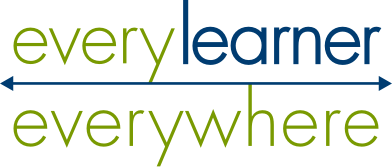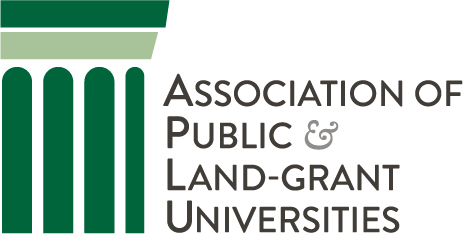Adaptive learning courseware initiatives produce a range of possible impacts for students, faculty, programs, and institutions. Those potential impacts can be seen in real-world conditions in a collection of six recently published case studies of adaptive learning implementation initiatives that were part of Adaptive Courseware for Early Success (ACES).
ACES supported course redesign activities at six universities to improve student success outcomes and reduce equity gaps for minoritized, poverty-affected, and first-generation students. The participating institutions targeted gateway courses with high enrollment and high DFW rates. ACES was delivered through the Association of Public & Land-grant Universities in partnership with Every Learner Everywhere.
The case studies of the ACES adaptive learning courseware implementation initiatives outline the unique goals, institutional context, process, and results at each institution. The case studies also include narrative sections on other improvements and impacts the participants observed. Below are some of the highlights from those sections.
Deeper learning
Cleveland State University biology and chemistry faculty report that adaptive courseware allowed them to reduce time in class teaching basic definitions and foundational knowledge since assignments were completed on those concepts beforehand. Instead, that class time was redirected to “deeper learning,” said Vice Provost John Holcomb.
Participants in the University of Toledo ACES initiative made a similar point in their team report. “We feel the students are actually learning the content and not just memorizing and forgetting,” they wrote. “By using the adaptive courseware, we are able to target student misconceptions early and fix them before it’s too late (after we see exam results). Student inquiries have improved from simple knowledge questions to more critical thinking and application.”
Related reading — When Students Write the Quiz: How This Biology Professor Innovated with Digital Learning to Increase Engagement
More connected to students’ learning
One University of Central Florida physics instructor in the ACES initiative said that using traditional lectures in large-enrollment gateway courses has meant they often present information repeatedly and hope students are hearing and understanding it. The instructor has experienced that as a disconnect between themselves and students, which this redesign initiative helped bridge.
“Using [adaptive courseware] makes sure that every question not just reaches the students but is also answered by the students,” they wrote. “I can add a variety of questions, which helps students improve their understanding of the subject. I can ask the same questions in different ways/styles to check if students are understanding. Answering the questions asked in a variety of ways helps students get a clear view of the physics idea being taught and understand better.”
Related reading — Using Formative Assessment in Supporting Student Directed Learning
Sustainability and agency
At the University of Texas El Paso, the ACES project focused on developing and using open education resources. William Robertson, the project lead, said his colleagues are more confident supplementing the courseware with OER of their own.
“[That] makes it more sustainable for the future because the faculty own it rather than leadership recommending it and saying this is what we should do,” he wrote.
Related reading — A Practical Course on Leveraging Culturally Relevant OER in Tribal Colleges and Universities
Model for other faculty
The community of practice that emerged at the University of Texas Rio Grande Valley as part of the ACES initiative is setting a new tone, said Tim Huber, Director of the School of Mathematical and Statistical Sciences. Collaborating to revise introductory math courses required is having ongoing ripple effects.
“We’re talking to each other more,” he said. “There’s new faculty coming into the department, and they see this going on and they realize there’s other people interested in the success of students. The department is interested in the success and the university is. All of this is really on display in this initiative and in all of the other things that we’re doing.”
Related reading — Data Culture, Data Literacy, and Building a Community of Practice At Your College or University
Professional growth
Faculty growth was a common theme across several case studies. The University of Toledo case study describes how the process of implementing courseware effectively necessarily prompted reflection and awareness about teaching practices, equity, and what students need.
The result, said the project lead Barbara Schneider, is that the institution is benefiting from “increased faculty development and a much deeper awareness of our equity gaps and our ability to address them.”
Related reading — Concerned About Equity In Higher Ed? Start with The DFWI Rate
Other impacts of adaptive learning implementation
The six case studies hint at other impacts from the initiatives in less detail. For example, one professor felt the way they used courseware enabled more student agency and self-directed learning. Other faculty described the power of putting learning and progress data from courseware in front of students. And some students in post-implementation surveys described how courseware suited their particular circumstances.
While acknowledging and detailing the many challenges and potential limitations of adaptive learning courseware, the six case studies read together illustrate the potential that digital learning has to create more equitable student outcomes by improving learning and educational experiences.
View all 6 case studies


